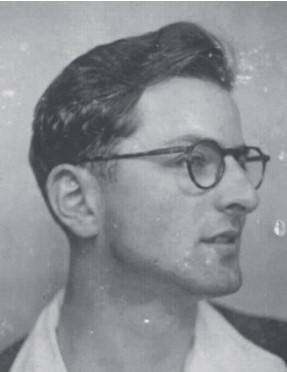Théodore Haenel
- Place of Birth: Weiterswiller, Lower Rhine
- Date of Deportation: Mid-1943
- Address when Deported: Epinal, France
- Place of deportation: Alderney
- Sites deported to: Norderney,
By Caroline Sturdy Colls and Kevin Colls
Théodore Haenel was born on 31 December 1922 in Weiterswiller in the Lower Rhine to a Jewish family. After experiencing antisemitic attitudes and Nazi propaganda in Alsace, he and his family moved to Gérardmer in the Vosges, France. Between November and December 1940, when he was seventeen years old, he worked in a garage next to their apartment. In mid-1943, Haenel was summoned to the nearby commune of Epinal and transported to Querqueville via Paris. While in Paris, Haenel removed his Star of David and he was reported to the authorities by a waiter.
After spending the night in a wooden hut without food or water, he was sent on to a camp in Querqueville. He spent just over a month there. In one of his post-war testimonies, Haenel recalled how the Lagerführer of Norderney SS Untersturmführer Adam Adler came to the camp and informed them that they were to be deported to Alderney. They were told that anyone who resisted would be shot. On 11 October 1943, he arrived at Norderney camp along with 244 of his fellow prisoners. The first night, they were not given any food or water but were simply locked in a barrack. He recalled seeing Adler and his deputy OT Truppführer Heinrich Evers the next day. Haenel described at length the poor conditions he experienced in Norderney: the rats, the lice, the lack of food and the brutality of the guards (including the Kapos) in the camp and the terrible working conditions.
He went to work at Westbatterie, one of the most notorious worksites on the island where he was subjected to 10–14 hours of intense labour, followed by a long walk back to Norderney, which was on the other side of the island. Following his evacuation from Alderney on 6/7 May 1944 and the ten- to thirteen-day cattle wagon journey that followed, Haenel was eventually sent to the Gneisenau camp in Camiers. He worked on numerous construction sites and participated in the excavation of unexploded bombs in Etaples. In August 1944, a convoy of labourers was gathered up with a view to sending them to Neuengamme. It was at this time that Haenel managed to escape from Gneisenau camp and hid in a house for three days before he finally met the Canadian army. On 1 October 1944, he joined the French army. His father and older sister had been killed in the gas chambers at Auschwitz-Birkenau, but he was reunited with his mother.
Sources
This biography is a summary of an interview with Haenel in Luc 2010, Les déportés de France vers Aurigny, p.157-165
Map
- Cemetery / Mass Grave
- Concentration Camp
- Forced Labour Camp
- Prison
- Worksite / Fortification
